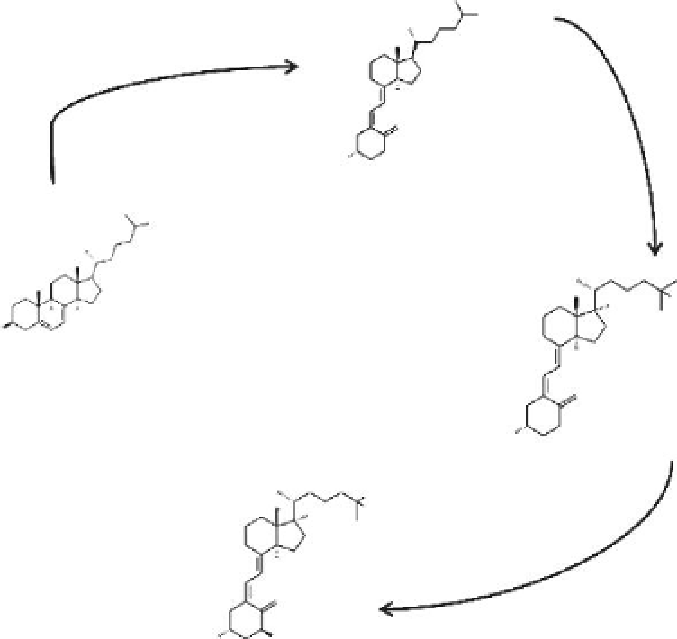Chemistry Reference
In-Depth Information
H
HO
Vitamin D
3
OH
H
HH
HO
H
25 (OH) Vitamin D
3
7-Dehydrocholesterol
HO
H
H
HO
OH
1,25 (OH)
2
Vitamin D
3
(Calcitriol)
FIGURE 12.6
Vitamin D conversion to key metabolites.
in Figure 12.7. These are the two specific Vit D metabolites that are measured in
serum to determine a person's Vit D status.
12.5 VITAMIN E
Vit E represents eight lipid-soluble compounds, including four tocopherols and four
tocotrienols, marked by α-, β-, γ-, and δ- separately, and are present in many oils,
fruits, vegetables, and foods. Of all the forms of these vitamins, γ-tocopherol is the
most common one, while the α-tocopherol is the most biologically active form of
Vit E. Based on current research, the symptoms of Vit E deficiency is dependent on
α- tocopherol.
Because Vit E cannot be accumulated in the liver, the excretion and metabolism
pathways are very important, thus Vit E is an important secondary metabolite and
acts as an antioxidant.
Vit E is a very important nutrient to promote efficient health. Generally,
Vit E deficiency may result in cardiovascular disease and end-stage renal failure.
Supplementation with Vit E alleviates these issues. Currently, Vit E can be found in
many foods, vegetables, and fruits.

Search WWH ::

Custom Search